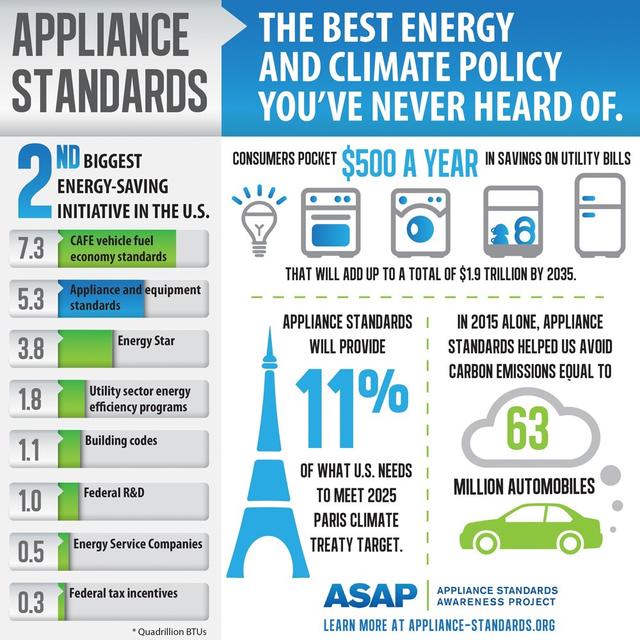Kannah Considers
I was pleased to see my home state jump to 14th in the nation for energy efficiency, as ranked by ACEEE’s 2018 scorecard recently. This significantly improved ranking is due in large part to Colorado’s commitment to follow California’s vehicle tailpipe standards, which require higher vehicle efficiency as well as low emissions vehicles (LEVs; electric vehicles are the most popular class).
I was equally displeased to see the Colorado Automobile Dealers Association (CADA) sue the state to prevent adoption of this standard. And perplexed by the rationale presented at a public meeting in my home town recently by Matthew Groves of CADA.
First, I found it troublesome that the presentation was littered with misinformation about electric vehicle performance, driving range and charging costs (Western Resource Advocates dispels myths here). Second, and to my utter disappointment, CADA also failed to take into account important societal benefits, which leads to my first blog question that we all should take into consideration when evaluating a product standard:
“What about our citizens, especially our most vulnerable?”
The American Lung Association provides plenty of health-related information about living near highways and the body of research is clear: Vehicle tail pipes emit significant air pollutants that can harm respiratory and cardiovascular health in a range of ways, both immediate (such as asthma attacks) and chronic (such as CPOD). The most vulnerable demographic? Children, teens and the elderly, especially those in the low-income bracket.
Consider this CADA: More than 60% of the state’s population lives along the Northern Front Range/Denver area in a dizzying collection of busy roads and highways (84% when you include all the Front Range Urban corridor; i.e., Colorado Springs and Pueblo). Air quality in Denver and the northern Front Range has steadily worsened and still doesn’t meet federal health standards.To top that off, and Colorado is the 8th fastest growing state and Denver is the 5th fastest growing large city in the U.S., so improvements without action are highly unlikely.
I think we can all agree that breathing air pollution from motor vehicles is unhealthy for everyone. But proximity matters too, and areas near high-traffic roadways often have much higher levels of pollution than neighborhoods at least 0.3 mile away. Any guess where the cheapest housing – especially in urban areas – can be found? As you might expect, it’s most often closest to the busiest highways and road ways.
Nearly one-third of Colorado’s 5.76 million citizens fall into the low-income bracket (CADA,that’s over 1.8 million people) and more than half a million of those live at or below the poverty level.I think it’s a reasonable leap to assume that a majority live within that 0.3 mile range of high pollution highways.
The American Lung Association makes clear that one of the best policy solutions to reduce traffic pollution is with cleaner fuel and vehicle standards. SWEEP documented the air quality benefits of electric vehicles in the Denver Metro and North Front Range area, and the impacts are significant: EVs effectively eliminate emissions of Volatile Organic Compounds (VOC) and Carbon Monoxide (CO), while also reducing Nitrogen Oxides (NOx) and Particulate Matter (PM).
Ozone pollution (created by photochemical reactions between VOC and NOx) is a primary concern in Colorado’s most populous center. Scientists pinpointed the primary sources of summertime ozone in the Denver/Northern Front Range region, and to no surprise vehicle emissions were at the top of the list.
CADA, please consider the moral ramifications of making our already weaker citizens only sicker by not taking the reasonable steps to make the air we breathe cleaner and safer. It’s not too late to make a U-turn. Emissions reductions are feasible and vehicle standards are the mechanism to reduce harmful vehicle pollution.
Thanks for your consideration. May we all breathe a little easier.
Hello colleagues, peers and friends! Introducing Kannah Considers, my new blog dedicated to viewing energy efficiency through the lens of social justice. This is where my technical background, policy development experience in product standards and personal spiritual beliefs will merge to show how seemingly simple (and sometimes controversial) energy policies can improve the lives of the most disadvantaged citizens in our society to all societal benefit. Here it goes – comments and questions welcome!
Ever thought about how many portable electronic devices you have around your home? Let’s count: cell phone, laptop, tablet, electric toothbrush, electric razor, power tool… Most of us have at least one or two, and some of us have more. They may do different things to make our lives easier or better, but they all have one thing in common: a battery.
 Now that the U.S. department of Energy has followed the California Energy Commission in adopting an energy performance standard for consumer battery chargers, all products with battery chargers sold after June 2018 will be required to use less energy to charge than they did before.
Now that the U.S. department of Energy has followed the California Energy Commission in adopting an energy performance standard for consumer battery chargers, all products with battery chargers sold after June 2018 will be required to use less energy to charge than they did before.
Kannah’s Principal, Suzanne Foster Porter, lead the California investor-owned utility consultant team that developed the test procedure and standard adopted by California back in 2012. DOE’s adoption this month will ensure all U.S. citizens will benefit from more efficient battery chargers, putting money back in their pockets through savings on their energy bills.
The appliance standards awareness project (ASAP) estimated the total energy savings, including the savings from California’s standard, savings from Oregon’s standard, and the savings from the U.S. DOE is 18 billion kilowatt hours per year, or more than enough to meet the annual electricity needs of 1.5 million US households. 1 These electricity savings will translate into $2.2 billion in lower utility bills for US citizens, and a reduce carbon dioxide emissions by 12.6 million metric tons. 2
2 www.epa.gov/energy/ghg-equivalencies-calculator-calculations-and-references

Last month, the Appliance Standards Awareness Project reminded us of the importance of federal appliance standards as a climate change policy. Standards are the second biggest energy-savings initiative in the U.S. (The CAFE vehicle fuel economy standards are the only policy that saves more energy.) Because of appliance standards, citizens pocket 500 dollars a year in savings on utility bills, and the US gets 11% of what it needs to meet the 2050 Paris Climate Treaty target.
So why have so few people even heard of appliance standards?
Energy efficiency is, by its nature, hidden to the untrained eye. The food is still cold in the fridge, the clothes come clean out of the washer, and the air conditioner keeps us cool. We can’t tell that many appliances subject to state and federal standards are using less energy, saving us money, and lowering carbon emissions.
More work needs to be done to revise old and adopt new appliance standards that reduce energy use in California and the rest of the U.S. We look forward to continuing to support our clients in this important climate policy cornerstone.


